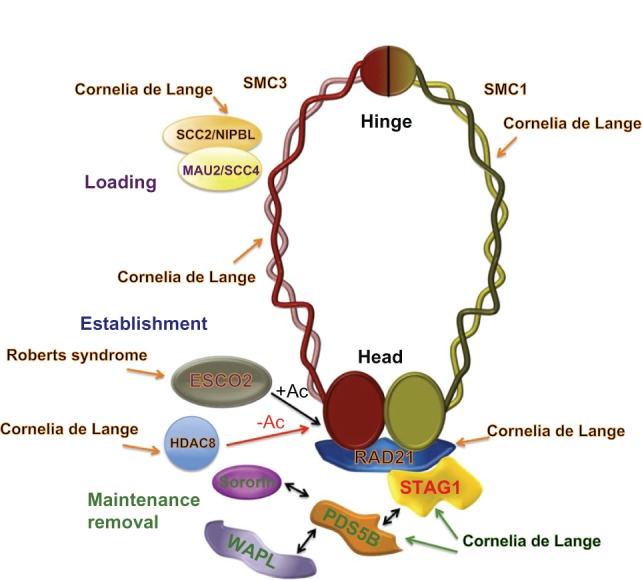Figure 2.

Cohesin and cohesin regulators in human cohesinopathies.
Notes: Gene mutation occurs in human CdLS and RBS (orange arrows), and results in mouse models suggest involvement of cohesin and cohesin regulator genes in these human disorders (green arrows). Mutations in the SCC2/NIPBL gene cause the most severe phenotype in patients with Cornelia de Lange syndrome. Mutations in genes encoding for the cohesin subunits SMC1α, SMC3, and RAD21, and for the histone deacetylase, HDAC8, cause a mild variant of this syndrome. Although the phenotype of mice lacking PDS5A and/or PDS5B function show developmental abnormalities like those in patients with Cornelia de Lange syndrome, currently there are no data supporting mutations of these genes as a cause of this cohesinopathy in humans. Similarly, to the author’s knowledge, no data have been reported on STAG1 mutations in patients with Cornelia de Lange syndrome. A human ortholog of yeast Eco1 named ESCO2 is mutated in Roberts syndrome, which has a phenotype closely related to that seen in Cornelia de Lange syndrome.
Abbreviation: Ac, Acetylation.
